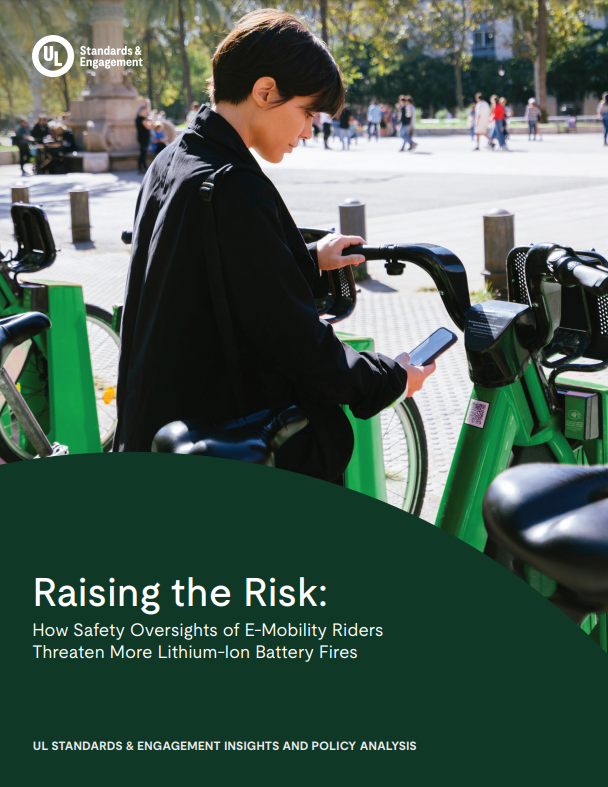
The e-mobility device landscape in the United States — comprised primarily of e-bikes and e-scooters — is undergoing a significant expansion fueled by advances in lithium-ion batteries and the allure of convenience. However, amid this rapid growth has come a troubling knowledge gap. Recent UL Standards & Engagement surveys reveal a surprising lack of understanding among e-bike and e-scooter riders about the main technology powering their devices.
了解这些知识差距 在本报告中 from UL Standards & Engagement, which provides an in-depth look at key trends across two separate online surveys of 2,200 U.S. adults on e-mobility safety, fielded in January and April 2024.
报告的主要结论包括
- 电动交通设备对城市居民的工作生活至关重要。54% 的车主购买电动自行车或电动滑板车是为了工作,其中 72% 的车主在过去 12 个月中使用电动自行车或电动滑板车送货。骑行者主要集中在城市地区(45%),更有可能是低收入者(39%)或中等收入者(32%)。
- 人们对其电源及其风险知之甚少。这些设备的大多数车主都不知道他们的电动自行车(53%)或电动摩托车(54%)是由锂离子电池驱动的。对电源的不了解--以及由此带来的风险--导致骑行者对其设备的安全性关注度很低。
- 缺乏意识正在转化为增加火灾风险的行为。用户为电动自行车和电动摩托车充电的方式增加了电池过热的危险和潜在的火灾风险。近一半在家充电的电动自行车骑行者(49%)堵塞了家中的消防通道,这也是导致多起死亡事件的一个因素。半数以上(53%)的电动自行车或电动摩托车在充满电后仍然插着电源。此外,电动车用户报告说,他们经常通宵充电(41%)或离家时在无人看管的情况下充电(26%)。
- 更换电池的做法带来了令人担忧的安全变数。近一半的电动自行车车主(48%)更换过旧的电动自行车电池:11%是因为旧电池起火;16%是因为旧电池在碰撞或撞击中损坏;24%是因为旧电池过热;28%是因为发现旧电池膨胀或鼓起。